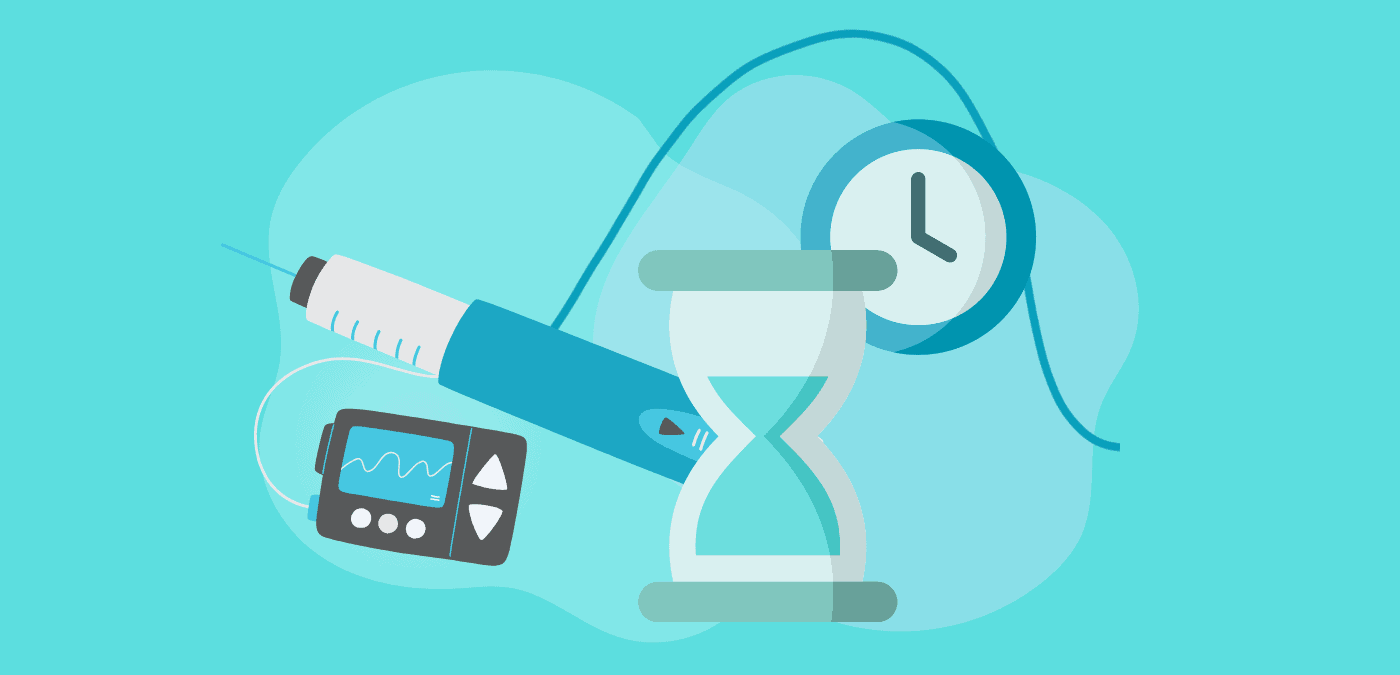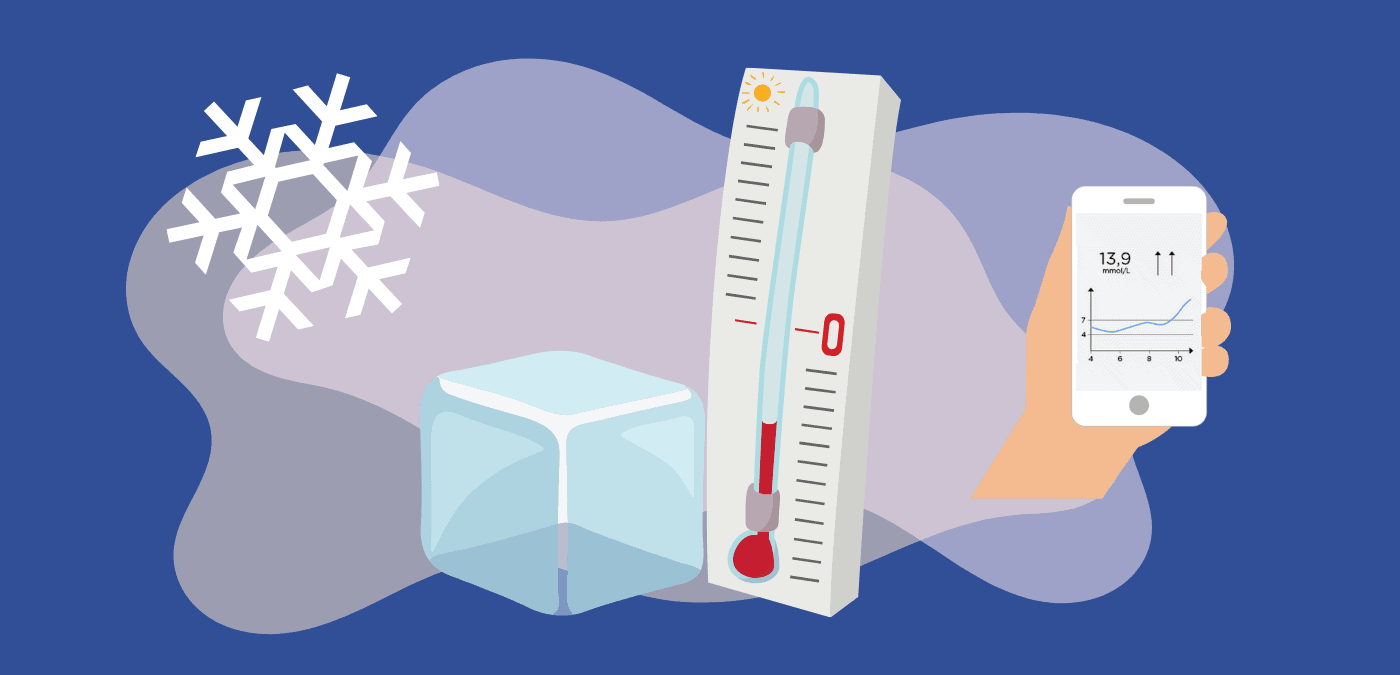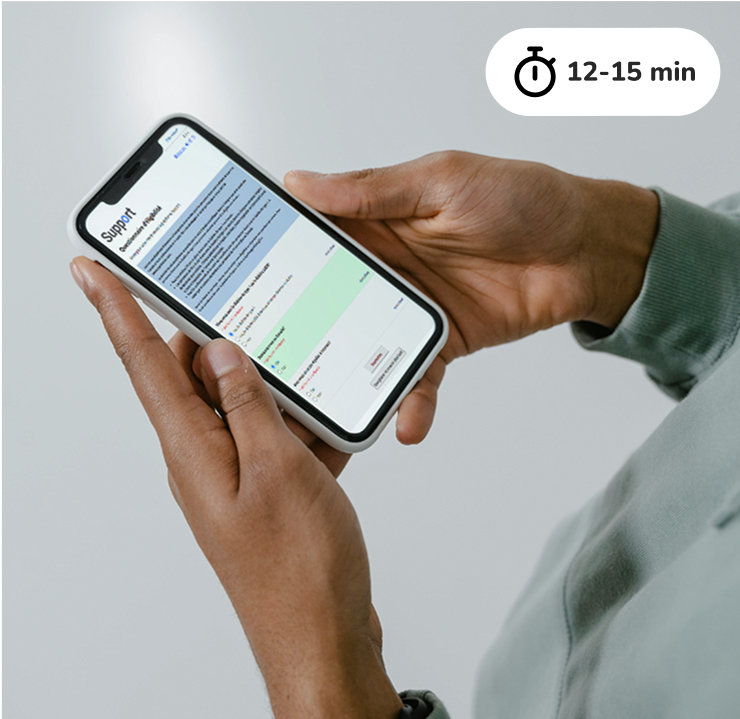Have you ever taken more insulin to correct stubborn hyperglycemia, only to unexpectedly plunge into hypoglycemia two hours later? If so, it might be that you still had active insulin in your body and that the extra dose stacked up on top of it, which resulted in too much insulin in your body at once.
This type of situation is not only frustrating, but also concerning. Fortunately, it can be avoided taking into account two elements: how long a dose of rapid-acting insulin stays active, and how to estimate the amount of insulin that is still active.
Here, we discuss the difference between insulin duration of action and active insulin, plainly and concretely. Once you have a good understanding of these two elements, your daily life with type 1 diabetes (T1D) might change for the better.
First things first… what is insulin duration of action?
When you take “rapid-acting” insulin, you might think it will act immediately and your blood sugar will lower quickly. However, its action only starts after 10 to 15 minutes. It reaches its peak after about 90 minutes, and continues for several hours. The total period of time when insulin is active is called insulin duration of action.
In fact, most “rapid-acting” types of insulin have a duration of action of about four hours (e.g., Fiasp, Apidra, Trurapi, Admelog). The actual duration can vary from one person to another or depending on dosage, but it is a good general benchmark.
So… what is active insulin?
Now that we know that rapid-acting insulin actually “acts” for several hours, we can understand what active insulin is: it is the amount of insulin that was administered earlier and that is still active in the body.
For example, if you inject 10 units of rapid-acting insulin at noon, you will still have about 5 units of active insulin left by 2 p.m. Even if you don’t eat anything in between, this insulin is still working on lowering your blood sugar.
Here’s why it’s important
If you inject a new dose without taking into account any active insulin, you risk stacking the effects of insulin. In other words, you risk having too much insulin in your body at once, which can cause your blood sugar to drop suddenly, hours later, while you’re doing something else…maybe while you sleep!
This situation is quite common, especially when we get frustrated about seemingly persistent high blood sugar. But in reality, active insulin is still working on lowering it.
In general, it is recommended to wait about four hours between two correction boluses, unless otherwise directed by your healthcare team. This waiting period allows the first bolus to complete its action safely and avoid the insulin stacking effect.
Can’t technology keep track of it?
If you use an insulin pump, good news: the pump automatically estimates the amount of remaining active insulin. Generally, this information is displayed on the pump screen and taken into account when calculating boluses—to avoid the stacking effect. If your pump settings allow you to modify the duration of action, make sure to set it correctly so that calculations are accurate.
Certain—not all—closed loop systems, also called artificial pancreases, estimate active insulin by also taking into account the basal rate. To find out more, don’t hesitate to read our fact sheet on hybrid closed loop systems.
If you don’t use a pump, several applications or smart meters can estimate active insulin when you enter your doses. It is a good tool to avoid double boluses, as long as you use it regularly.
While technology can help, understanding what’s going on in your body is crucial.
Less uncertainty, more serenity
With a better understanding of insulin duration of action and active insulin, you can:
- Avoid taking too much insulin by mistake—and ending up in hypoglycemia;
- Understand why your blood sugar is still dropping;
- Take better informed decisions when eating, snacking or doing physical activity;
- Adapt your doses more accurately.
In short, it makes you safer, more independent…and more confident.
Find out more
A module on this topic is available when you connect to the Support platform. You will find plain, illustrative information on active insulin and on how to use it daily in your T1D management.
Written by: Sarah Haag, Clinical Nurse, B.Sc.
Reviewed by:
- Catherine Leroux, RD, M.Sc.
- Rémi Rabasa-Lhoret, MD, PhD
- Claude Laforest, Jacques Pelletier, Michel Dostie, patients partner




